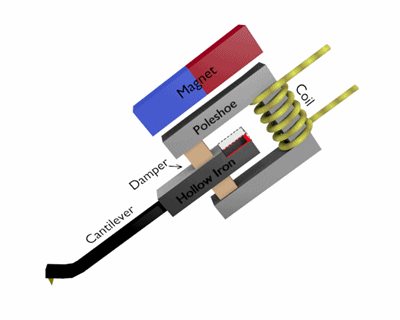Search the Community
Showing results for tags 'photo optical cartridges'.
-
Turntables are and remain very popular. More and more turntables are being sold and the production numbers of records are increasing year by year. With this information I would like to give the newbies who are new to turntables and cartridges a basis to understand the technical differences between MM / MC / MI ( MP ) cartridges. MM = Moving Magnet Nowadays the probably most common pick-up technology and especially in the entry level area dominating. At the upper end of the nail carrier there is a magent, which moves excited by the movement of the needle in the groove between two coils. Physically, the MM pickup is an electromagnetic transducer: The change in flux in the magnetic circuit is coupled to the inhomogeneity of the magnetic field - the greater this is, the greater the signal. The MM-principle delivers comparatively high signal voltages, so that after the usual equalizer preamplifier a quite simple preamplification with 47kOhm input resistance is sufficient. Until the end of the 1990s, and again occasionally today, many HiFi full amplifiers were equipped with a phono input suitable for MM systems. MC = Moving Coil Mechanically, the MC design is similar to an MM system, except that here a coil is located at the end of the needle carrier and the magnet(s) are fixed. Moving Coil is therefore an electrodynamic transducer that delivers relatively low signal voltages and therefore requires a very high-quality and low-noise additional pre-amplification. Phono preamps suitable for MC have - usually adjustable - input impedances between 20 and 1000 ohms. Many common phono preamps can be switched between MC and MM operation.The advantages of the MC principle are - generally speaking - the potentially lower weight of the coil attached to the needle carrier. Since there is no need to move a heavy magnet back and forth, more detailed scanning is possible. MC pickups are usually more expensive than MM systems and also place higher demands on the rest of the reproduction chain. In terms of sound quality they are usually (not always) superior to a moving magnet system. MI = Moving Iron / MP = Moving Permalloy The third magnetic scanning principle is - wrongly - often overlooked. In the high-end segment e.g. Soundsmith from the USA or Goldring from England are well-known advocates of the MI principle; the Japanese traditional manufacturer Nagaoka places its MP pickups in the lower and middle price segment as a sonic superior alternative to MM systems. As with the MM principle, here the coils are permanently mounted. At the end of the nail carrier, however, there is no heavy magnet but only a tiny piece of a magnetic metal (either "iron" or so-called mu-metal, "permalloy"). Depending on the pick-up, this piece of metal is even lighter than the coil of an MC pick-up, which can result in an even better scanning of the record groove. MI- and MP-pickups are also electromagnetic transducers, therefore they deliver high signal voltages and can be operated at the MM-input of the (pre-)amplifier.






